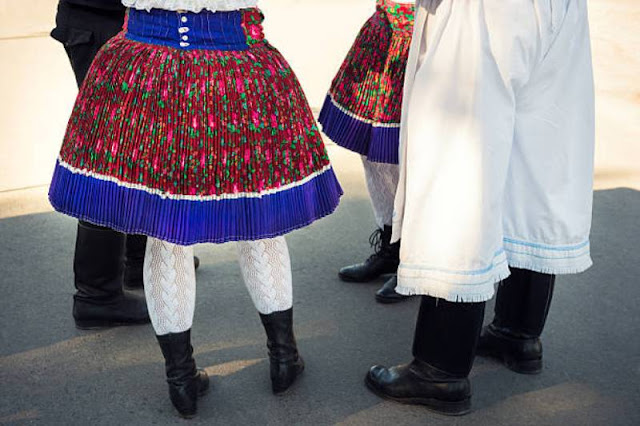- Get link
- X
- Other Apps
- Get link
- X
- Other Apps
The Kilted Skirt of Greece: A Traditional Garment for Men in Celebration and Dance
The kilted skirt, a traditional garment worn by men in
certain regions of Greece, is a distinctive piece of clothing that holds a
unique place in the country's cultural heritage. Often associated with
celebrations, dances, and festivals, the kilted skirt is a symbol of Greek
pride and identity. In this essay, we will reconnoiter the historical roots,
design characteristics, and cultural significance of the kilted skirt, shedding
light on its enduring presence in Greek traditions.
Historical Roots
The kilted skirt, known as "fustanella" in Greek,
has a history that dates back centuries. Its origins can be traced to the
military uniforms of the Greek warriors who fought during the Greek War of
Independence in the 1820s. The fustanella, with its distinctive pleats, became
a symbol of resistance and a mark of national identity during this period. Over
time, it evolved from a military uniform into a traditional garment worn by men
during cultural and celebratory events.
Design Characteristics
The fustanella is characterized by several distinct design
features that make it a unique and recognizable piece of clothing:
Pleated Skirt: The most defining feature of the fustanella
is its pleated skirt. Typically, the skirt is knee-length and consists of
numerous pleats, each meticulously stitched to create a distinctive, voluminous
appearance. The pleats are not only aesthetically pleasing but also allow for
ease of movement, making it a practical choice for dances and celebrations.
Tasseled Waistband: The waist of the fustanella is adorned
with a tasseled waistband, often made of silk or wool. The tassels are
intricately designed and can be quite colorful, adding a touch of elegance to
the garment.
Embroidered Apron: In some regions of Greece, the fustanella
includes an embroidered apron that hangs from the waist. The apron is typically
adorned with intricate patterns and symbols that hold cultural and regional
significance.
Accessories: To complete the ensemble, men often wear
accessories such as a white shirt, a sash, a fez (hat), and traditional
footwear, such as tsarouhia (shoes with pom-poms). These accessories add layers
of cultural and historical depth to the outfit.
Cultural Significance
The kilted skirt, or fustanella, holds deep cultural
significance in Greece and plays a prominent role in various aspects of Greek
life:
Cultural Identity: The fustanella is a powerful symbol of
Greek cultural identity. It reflects a sense of pride in the country's rich
history and traditions. Wearing the fustanella is a way for individuals to
connect with their Greek heritage and express their patriotism.
Traditional Celebrations: The fustanella is prominently worn
during traditional celebrations and festivals. It is especially associated with
Greek dances, where the swirling, pleated skirt adds a dynamic and visually
captivating element to the performance. Dancers in fustanellas often
participate in lively group dances, such as the kalamatianos and syrtos, that
are integral to Greek cultural events.
Weddings: In some regions of Greece, the groom may wear a
fustanella as part of his wedding attire. This tradition reflects the
significance of the garment as a symbol of new beginnings and the continuation
of cultural heritage within the family.
Military Ceremonies: While the fustanella is no longer a
standard military uniform, it continues to be worn during ceremonial events by
certain units of the Greek military, such as the Presidential Guard. These
appearances symbolize the link between Greece's military history and its
modern-day armed forces.
Tourism and Souvenirs: The fustanella has also become a
popular souvenir item for tourists visiting Greece. Many tourists are drawn to
the vibrant colors and intricate design of the garment, making it a symbol of
their experience in the country.
Conclusion
The kilted skirt, or fustanella, represents a unique and
enduring aspect of Greek culture. Its origins in the struggles for independence
have given it a rich historical context, while its continued presence in
celebrations and dances highlights its cultural significance. The fustanella
serves as a symbol of Greek pride and identity, connecting people to their
heritage and traditions. In a rapidly changing world, this traditional garment
remains a vibrant testament to the resilience and cultural richness of Greece.
Whether worn in the spirited whirl of a dance or as part of a wedding
celebration, the fustanella continues to be a source of cultural pride and a
visual representation of Greek heritage.
- Get link
- X
- Other Apps

Comments
Post a Comment